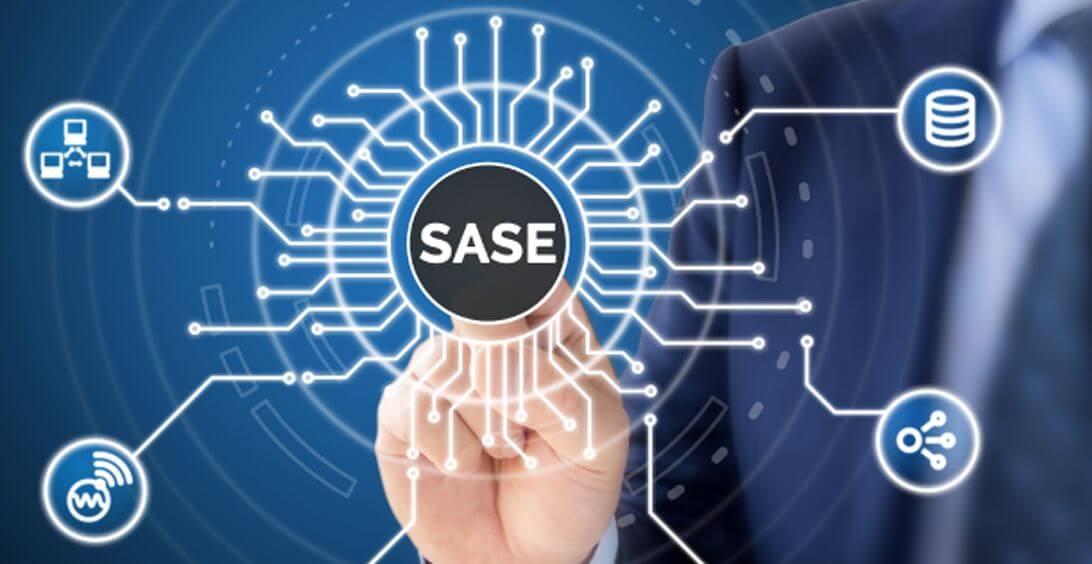Key Takeaways:
- SASE combines network and security services to support dynamic access needs.
- It offers advantages like reduced complexity, real-time threat prevention, and better cost management.
- SASE provides a more agile and integrated approach compared to traditional security models.
- AI integration is enhancing SASE’s capability to offer proactive security.
- The adoption of SASE indicates a broader trend towards comprehensive, future-ready cybersecurity strategies.
In an era where digital threats are becoming more complex and pervasive, the cybersecurity industry continues to evolve rapidly, seeking advanced solutions to safeguard digital assets. One of the emergent frameworks leading this transformative wave is SASE (Secure Access Service Edge), which represents a convergence of network and security functions into a single, unified cloud service. SASE’s rise is concurrent with the increasing need for organizations to facilitate secure remote work environments and to manage access to cloud applications efficiently. A deeper understanding of SASE is pivotal for organizations looking to modernize their cybersecurity infrastructure in alignment with today’s digital landscape.
The Fundamentals of SASE
SASE stands at the intersection of networking and cybersecurity, blending comprehensive WAN capabilities with integrated security services. This fusion helps create a security-driven networking framework conducive to the ever-evolving business environment and user mobility. The essence of SASE lies in its identity-centric approach, whereby it doesn’t merely protect a fixed perimeter. Instead, it focuses on safeguarding users and devices regardless of their location. It does this by combining technologies such as software-defined wide-area networking (SD-WAN), secure web gateways (SWG), cloud access security brokers (CASB), and zero-trust network access (ZTNA). Being a cloud-delivered service, SASE is inherently scalable, allowing organizations to swiftly adapt to changing network and security demands.
Advantages of Adopting SASE Solutions
The implementation of SASE offers organizations a multifold of functional benefits. By converging network and security services, organizations can significantly reduce the complexity of their IT infrastructure, leading to streamlined operations and reduced costs. This consolidation enables a shift from a hardware-centric approach, embracing a more flexible, software-driven model. Furthermore, the SASE framework provides comprehensive, real-time threat detection and mitigation, ensuring organizations can respond more effectively to dynamic security threats. As cloud adoption continues to increase, the need for secure cloud access becomes more critical. SASE offers robust cloud-security features, facilitating a safe cloud migration while reinforcing data protection and regulatory compliance.
Real-World Applications of SASE
A tangible example of SASE’s utility can be seen in organizations with distributed workforces. By deploying a SASE solution, a multinational corporation can uniformly secure access to its network for employees worldwide, irrespective of their geographical location. This approach yields a fortified cyber defense and empowers employees with the flexibility and freedom to work efficiently and securely from anywhere. It’s essential in today’s increasingly digital and mobile work environment.
SASE versus Traditional Security Models
When set against traditional security models, SASE’s distinctions become even more pronounced. Legacy cybersecurity systems often need help to keep pace with the swift development of cloud technologies and the sophistication of modern cyber threats. These conventional systems are typically perimeter-based and lack SASE’s inherent agility and scalability. By centering on the user and device rather than the location, SASE’s comprehensive architecture can address the deficiencies of conventional security methods, providing a more robust solution for current and future cybersecurity challenges.
SASE Implementation Strategies
Integrating a SASE framework is a strategic undertaking that requires careful planning and execution. Organizations should begin by thoroughly auditing their current network and security architecture to identify gaps and areas for improvement. A phased implementation strategy allows for the gradual integration of SASE components, reducing disruption to business operations. Effectively communicating the changes and training staff are other critical factors contributing to a successful deployment. Keeping an eye on key performance indicators and metrics is instrumental in measuring the efficacy of the SASE solution and making informed adjustments as required.
Data Security and Compliance within SASE
Beyond its efficiency and adaptability, SASE’s robust data security and compliance approach stands out significantly. For businesses with stringent regulatory requirements, SASE solutions provide a harmonized security policy that adjusts dynamically as the network expands, maintaining consistent security and compliance. The decentralized nature of SASE aligns well with emerging data-protection laws and industry-specific regulations, ensuring that organizations can maintain high standards of data security and privacy, no matter where the data resides or travels.
The Role of Artificial Intelligence in SASE
Artificial Intelligence (AI) amalgamated within the SASE framework elevates the system’s capabilities by introducing sophisticated threat detection algorithms and autonomous responses. With AI-fueled analytics, SASE solutions can identify and counteract nascent cyber threats, ensuring a more proactive and predictive cybersecurity posture. Moreover, AI enhances the adaptive nature of SASE, continuously learning and improving from network traffic patterns and security incidents to optimize performance and safeguard against evolving threats.
Future Trends in SASE and Cybersecurity
Looking forward, SASE is poised to be a cornerstone in the constantly shifting domain of cybersecurity. It represents a paradigm shift towards integrating network functions and security mechanisms in a cloud-centric world. As new technologies emerge, SASE’s versatile and proactive stance ensures it is well-equipped to address upcoming cybersecurity threats and challenges. Indeed, SASE is more than a mere trend; it embodies the aspiration for a comprehensive and adaptable cybersecurity strategy to meet the demands of a digital future head-on.
As businesses navigate the complexities of modern cybersecurity, adopting SASE frameworks is an aspirational step towards a more secure and efficient organizational ecosystem.



